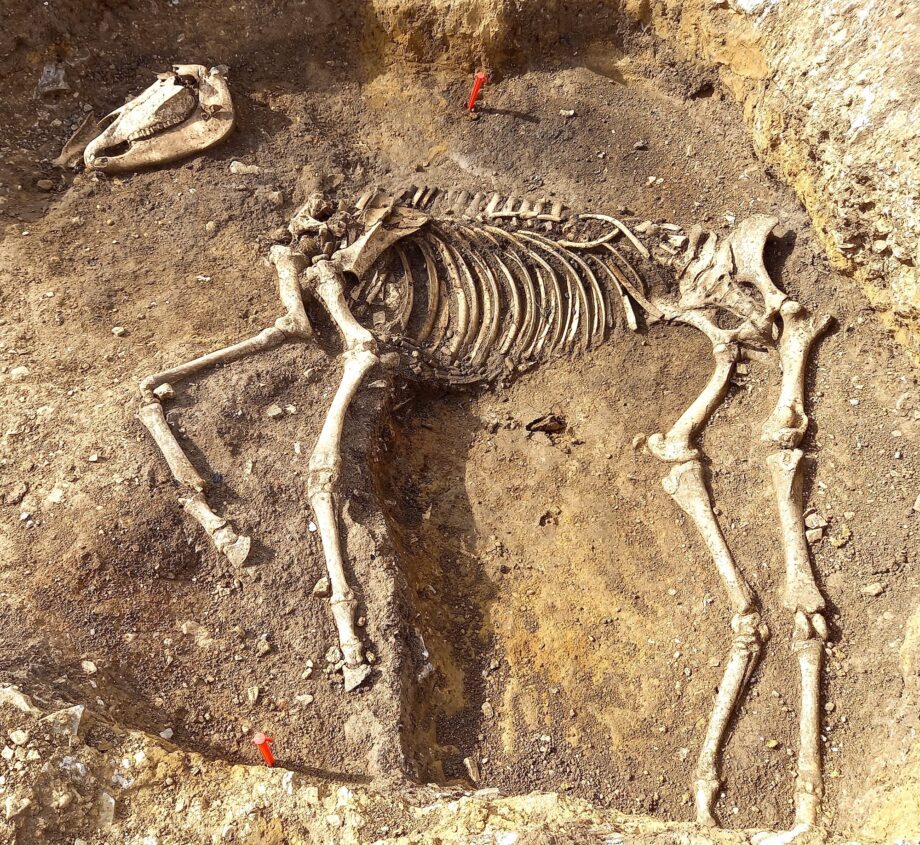This weeks news brought to you by Medieval Historia…Read on.
ROMAN
Nearly 1,900 years ago, a horse was laid to rest with care, hinting at a special bond with its owner. Most likely a Roman gentleman farmer.

The animal, smaller than most modern horses, was discovered on the grounds of a Roman villa near Langport, Somerset. Excavations this year, led by Thames Valley Archaeological Services (TVAS) and overseen by Armour Heritage, were funded by the Abri housing association. Abri plans to build 100 homes on the site.
The burial’s careful nature suggests this horse was more than just livestock…it may have been a trusted companion, providing a unique glimpse into life and relationships in Roman Britain.
THIEVES
In other news, police hunt is underway after illegal metal detectorists dug up the grounds of a medieval abbey in the Cotswolds in search of buried treasure.
The intrusions took place at Hailes Abbey, near Winchcombe, Gloucestershire, on 20 or 21 August, as the detectorists attempted to uncover artefacts from the ruined site.
The 13th-century Cistercian abbey, just north of Cheltenham, is a scheduled monument, legally protected due to its historical importance.

Gloucestershire Police have launched an investigation and are urging anyone with information to come forward. The activity, known as nighthawking, involves the unauthorised use of metal detectors to remove artefacts from protected sites.
Hailes Abbey is on the Schedule of Monuments, meaning any disturbance requires state consent, making the trespass a serious offence.
GUESS WHO?
Archaeologists believe they may have uncovered an “incredibly rare” stone carving depicting the face of someone who lived in Fife over 1,000 years ago.
The discovery was made by University of Aberdeen student Jodie Allan, volunteering at an excavation of an ancient hillfort at East Lomond, near Falkland.

Professor Gordon Noble, one of the lead archaeologists, described the 12 cm (5 in) carving as possibly Pictish, noting it appeared to show two eyes, a nose, and a hairline. He added, “If it really is a human face, it’s exciting to think it could be a rudimentary portrait of a local Pict who lived at East Lomond.”
The term “Pict” originates from the Roman name Picti, first used around 1,700 years ago during Rome’s occupation of the British Isles.
Archaeological evidence suggests the Picts inhabited parts of Scotland for roughly 600 years, leaving a rich legacy of art, symbols, and fortified sites.





